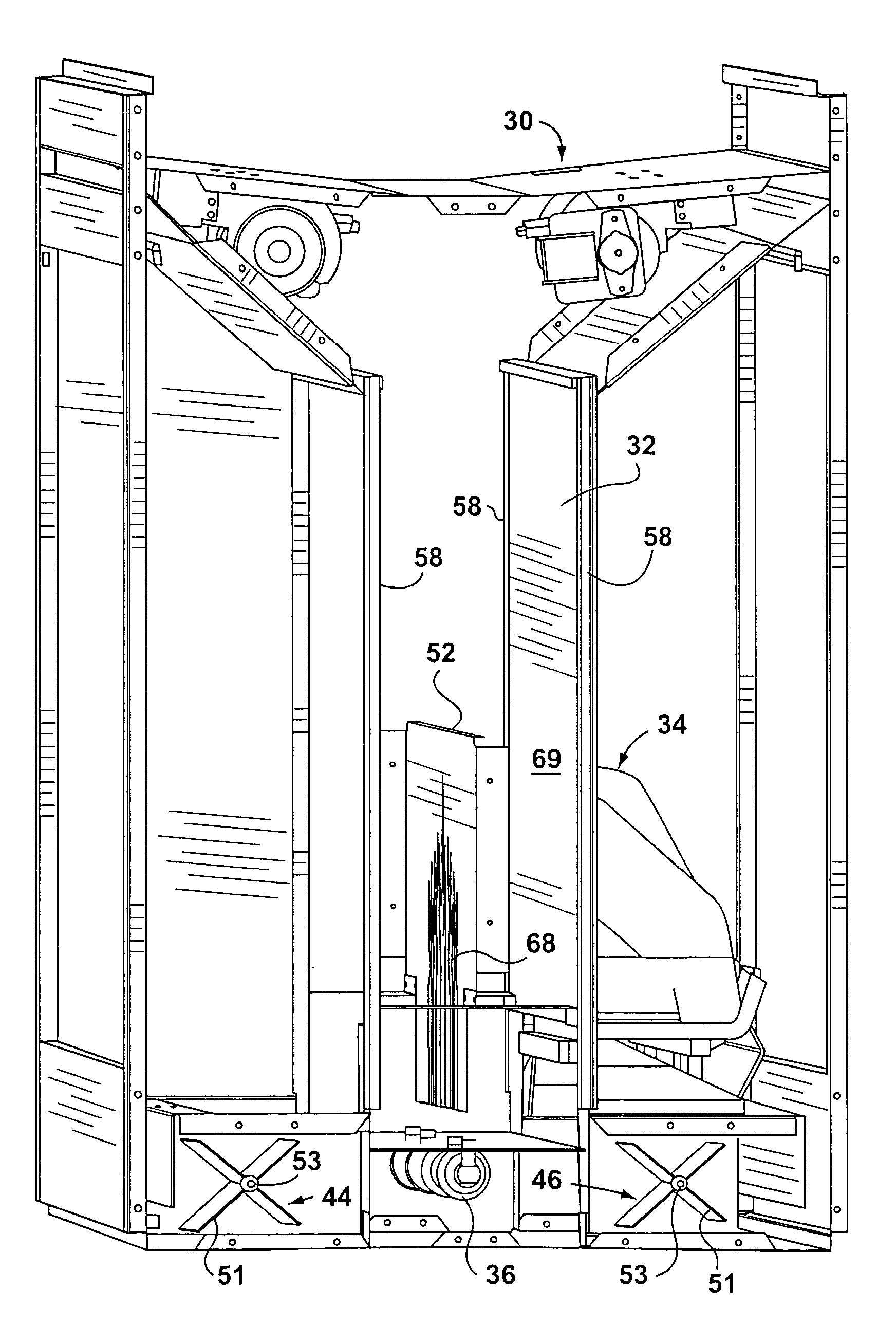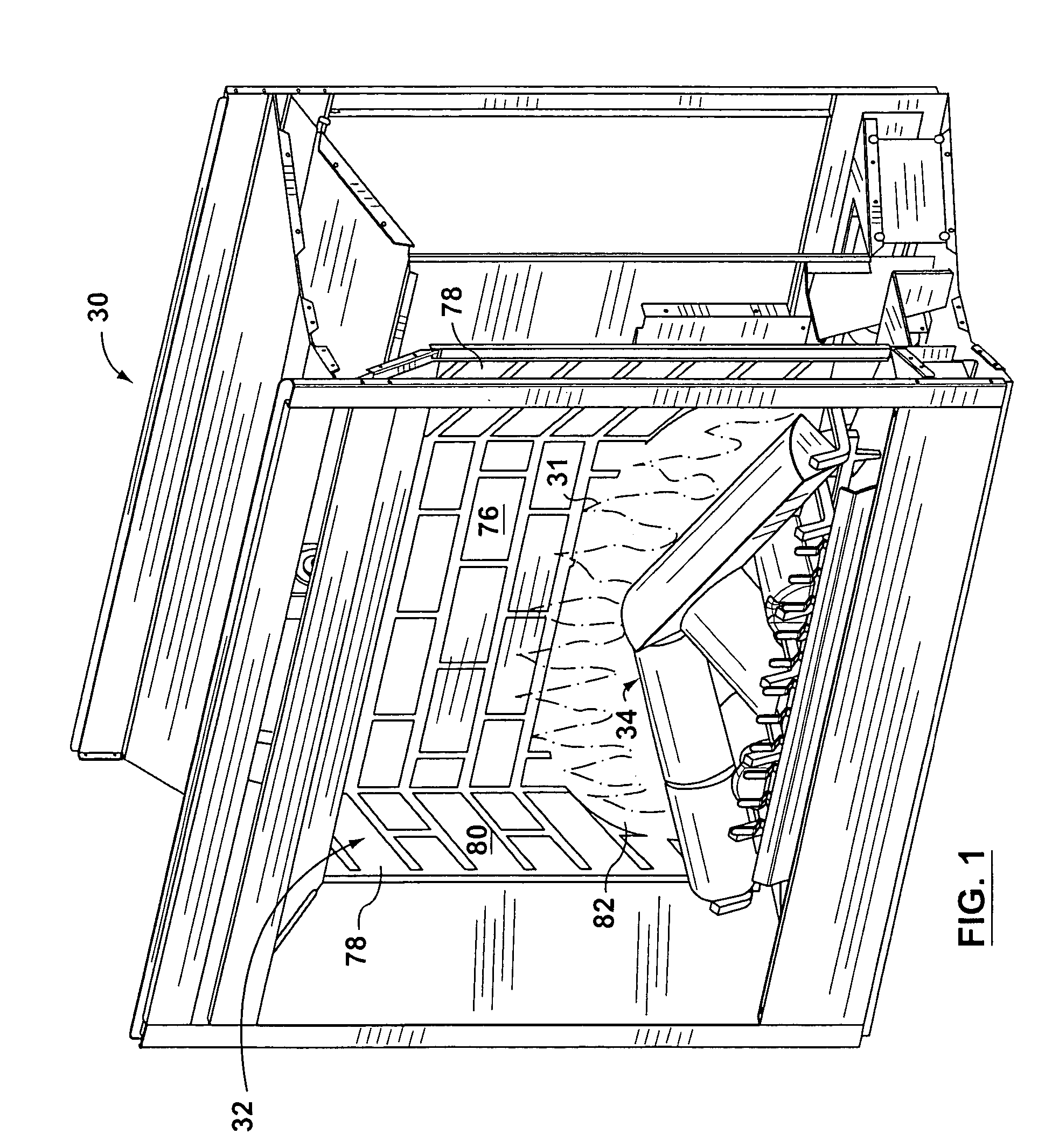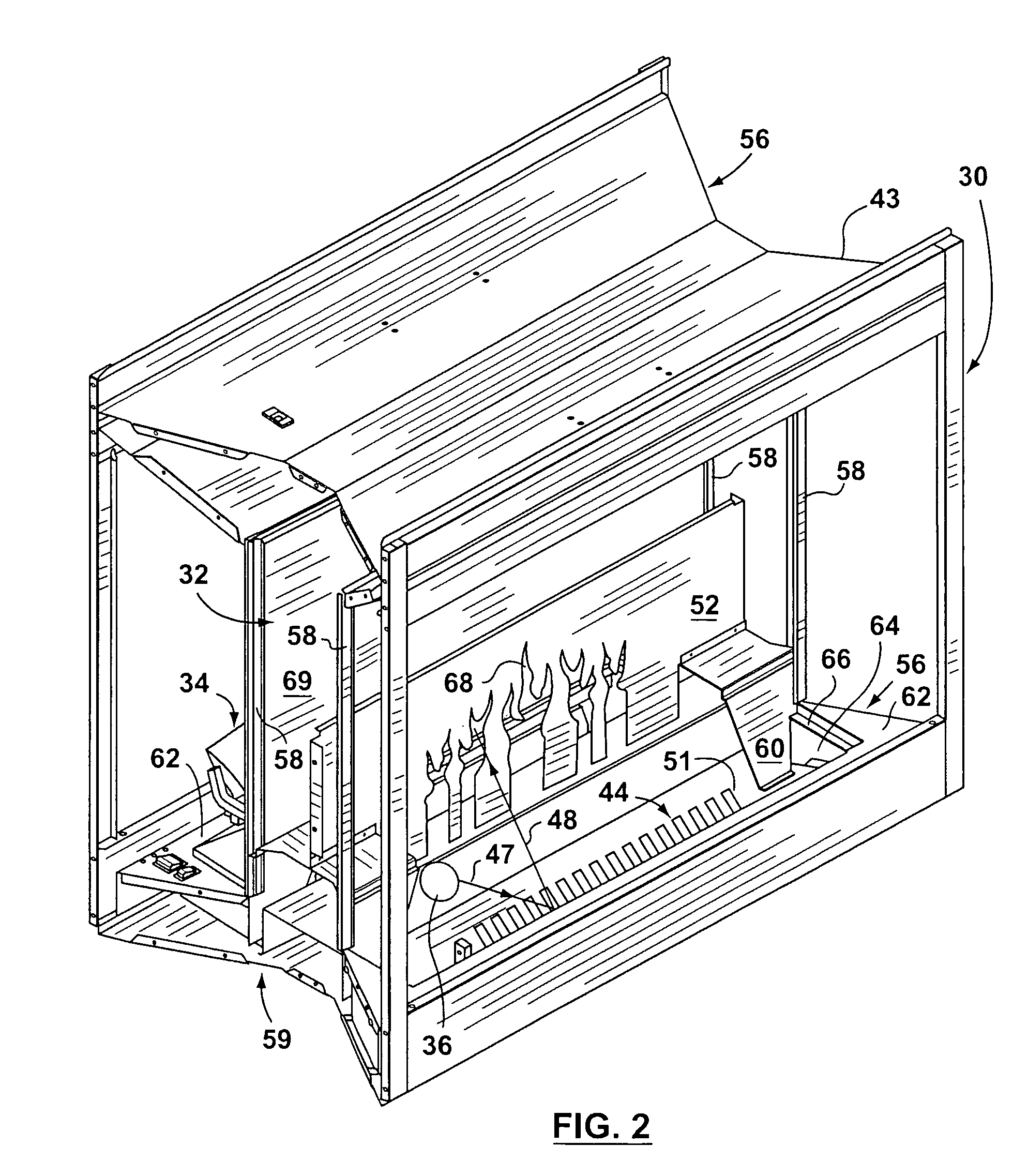Flame simulating assembly
a technology flame simulating assembly, which is applied in the field of flame simulating assembly, can solve the problems of insufficient thickness of the interior wall of the two conventional back-to-back units, the inability to combine two conventional flame simulating assemblies to form a two-sided flame simulating assembly, and the inability to meet the requirements of the purpos
- Summary
- Abstract
- Description
- Claims
- Application Information
AI Technical Summary
Benefits of technology
Problems solved by technology
Method used
Image
Examples
Embodiment Construction
)
[0055]Reference is first made to FIGS. 1–7 to describe a preferred embodiment of a flame simulating assembly indicated generally by the numeral 30 in accordance with the invention. The flame simulating assembly 30 is for providing one or more images of flames 31 and includes one or more light sources 36, a first screen 32, and a second screen 38 (FIG. 5). In the preferred embodiment, the first screen 32 is positioned in a first path of light 55 (represented by arrows 47, 48, shown in FIG. 5) from the light source 36, and the second screen 38 is positioned in a second path of light 57 (represented by arrows 49, 50, shown in FIG. 5) from the light source 36, as will be described. The first screen 32 is adapted to receive light from the light source 36 to form the image of flames 31, which is transmitted through the first screen 32. In addition, the second screen 38 is adapted to receive light from the light source 36 to form the image of flames 31, which is transmitted through the se...
PUM
 Login to View More
Login to View More Abstract
Description
Claims
Application Information
 Login to View More
Login to View More - R&D
- Intellectual Property
- Life Sciences
- Materials
- Tech Scout
- Unparalleled Data Quality
- Higher Quality Content
- 60% Fewer Hallucinations
Browse by: Latest US Patents, China's latest patents, Technical Efficacy Thesaurus, Application Domain, Technology Topic, Popular Technical Reports.
© 2025 PatSnap. All rights reserved.Legal|Privacy policy|Modern Slavery Act Transparency Statement|Sitemap|About US| Contact US: help@patsnap.com



